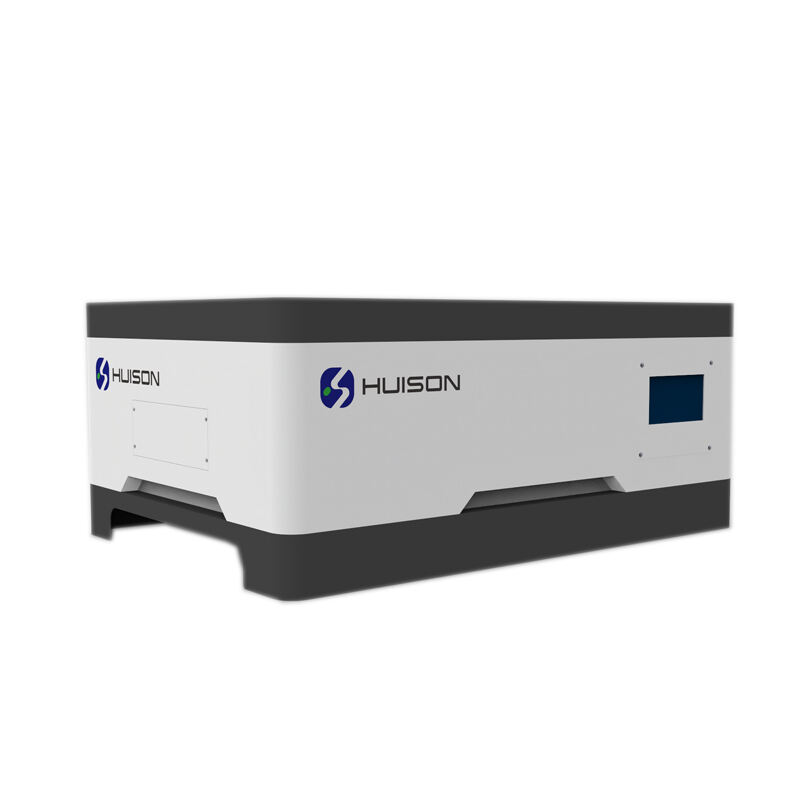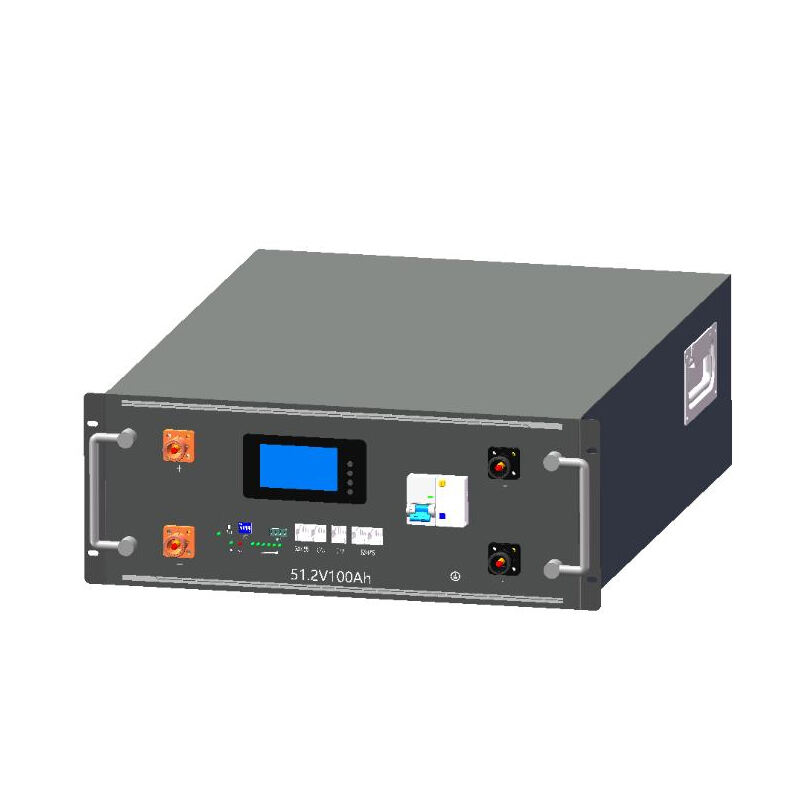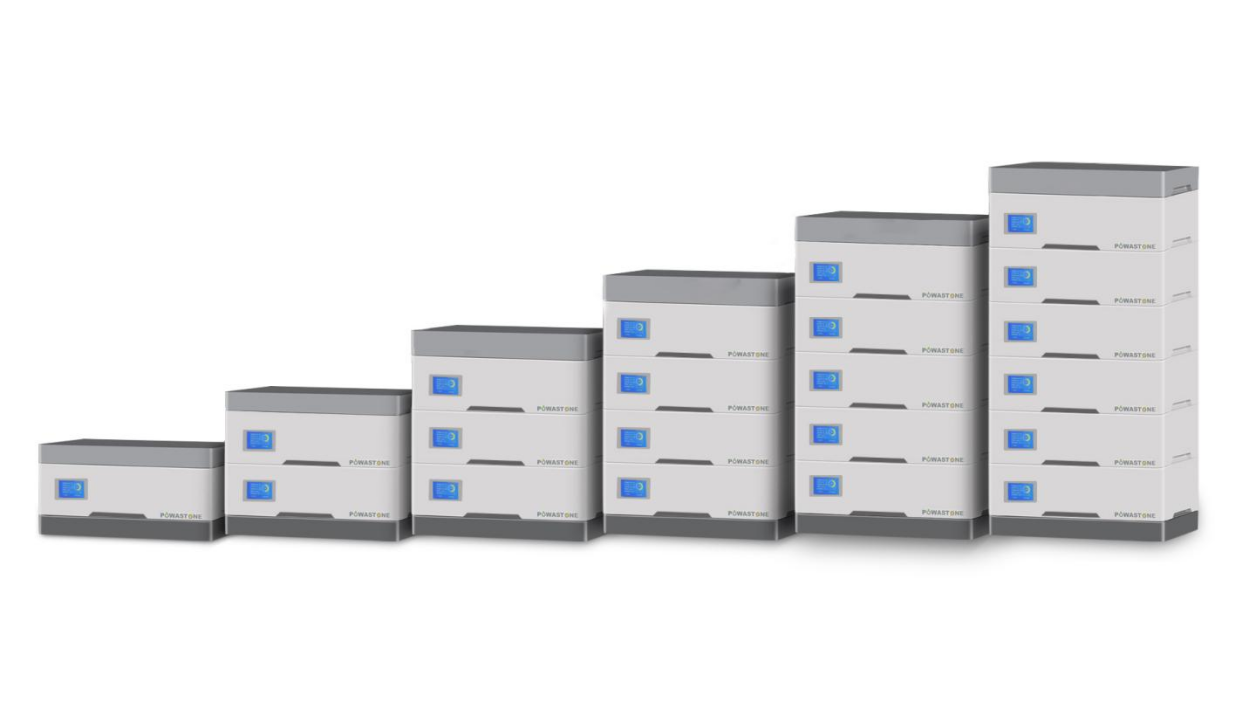الطلب المتنامي على حلول تخزين الطاقة الفائقة الجهد
Time : 2025-06-26
مع تعزيز السعي العالمي للحصول على مصادر طاقة أنظف وأكثر استدامة، يشهد الطلب على البطاريات الفائقة الجهد الكبيرة وغيره من حلول التخزين المتقدمة ارتفاعًا غير مسبوق. أصبحت هذه الأنظمة التخزينية المعقدة ركائز أساسية في البنية التحتية للطاقة الحديثة، حيث تلعب دورًا محوريًا في الحفاظ على استقرار الشبكة، تسهيل دمج الطاقة المتجددة بشكل سلس، وتحسين كفاءة الطاقة بشكل عام. في الاستعراض التالي، سنغوص عميقًا في أهمية تخزين الطاقة الفائقة الجهد، نحلل التقنيات الأساسية التي تقود تطورها، وندرس الاتجاهات الناشئة التي من المرجح أن تشكل مسارها المستقبلي.
الدور الأساسي لتخزين الطاقة الفائقة الجهد
تُعدّ أنظمة تخزين الطاقة عالية الجهد بمثابة جسر أساسي يُوازن بين التفاوتات الجوهرية بين العرض والطلب على الطاقة من قِبل المستهلكين. مصادر الطاقة المتجددة، مثل الألواح الشمسية ومزارع الرياح، متقطعة بطبيعتها، إذ يعتمد توليدها للطاقة بشكل كبير على تقلبات الأحوال الجوية. على سبيل المثال، يتذبذب إنتاج الطاقة الشمسية على مدار اليوم، حيث يبلغ ذروته خلال ساعات الظهيرة المشمسة وينخفض بشكل ملحوظ ليلاً أو في الأيام الغائمة. وبالمثل، لا تُولّد توربينات الرياح الكهرباء إلا عندما تهب الرياح بالسرعة المناسبة، مما يؤدي إلى إنتاج طاقة غير متسق.
خلال فترات التوليد الوفيرة للطاقة المتجددة، عندما يشرق الشمس بقوة أو تهب الرياح بعنف، تعمل أنظمة التخزين الفائقة الجهد كإسفنج للطاقة، تمتص الكهرباء الزائدة. ثم يتم إطلاق هذه الطاقة المخزنة خلال فترات الطلب المرتفع أو عندما تنخفض إنتاجية الطاقة المتجددة، مما يضمن توفير طاقة مستمرة وموثوقة للمستهلكين. خذ مثالاً محطة طاقة شمسية كبيرة في منطقة مشمسة. في يوم مشمس بشكل خاص، قد تنتج المحطة كهرباء أكثر مما يمكن للشبكة المحلية امتصاصه فورًا. يمكن لبطاريات فولتية عالية تخزين هذه الطاقة الفائضة وإطلاقها خلال المساء عندما يرتفع عادةً الطلب على الكهرباء، مما يمنع انقطاع التيار ويقلل الحاجة إلى محطات الوقود الأحفوري الاحتياطية.
المنظر التكنولوجي لتخزين الطاقة الفائقة الجهد
بين التقنيات المختلفة التي تتنافس للهيمنة في مجال تخزين الطاقة الفائق الجهد، برزت بطاريات الليثيوم أيون كأبرز المرشحين. وتشتهر بطاريات الليثيوم أيون بكثافتها العالية للطاقة، وعمرها الافتراضي الطويل، وكفاءتها النسبية العالية، مما جعلها الخيار الأول لعدد واسع من التطبيقات، من تزويد الهواتف الذكية والمركبات الكهربائية بالطاقة إلى أنظمة تخزين الطاقة المتصلة بشبكة الكهرباء على نطاق واسع. شركات مثل هويسن إينيرجي، كما هو موضح على https://www.huisonالطاقة .كوم /, كانت في طليعة الابتكار في بطاريات الليثيوم أيون. تتميز منتجاتهم المتقدمة من بطاريات الليثيوم أيون بأنظمة إدارة البطارية (BMS) ذات المستوى العالمي التي تُحسّن عمليات الشحن والتفريغ، وتزيد من عمر البطارية، وتعزز السلامة العامة.
ومع ذلك، فإن السعي لتحقيق كفاءة أكبر وفعالية تكلفة واستدامة في حلول تخزين الطاقة دفع الباحثين والمصنعين لاستكشاف تقنيات بديلة. على سبيل المثال، توفر بطاريات التدفق ميزة فصل قدرة تخزين الطاقة عن إخراج القوة، مما يسمح بالتوسع بسهولة. تتكون من حلين كهروlysate يتدفقان عبر مجموعة خلايا، حيث تحدث التفاعلات الكهروكيميائية لتخزين وإطلاق الطاقة. أما البطاريات الصلبة، وهي تقنية واعدة أخرى، فتستبدل الإلككتروlyte السائل أو الهلامي في البطاريات الليثيوم أيون التقليدية بـelectrolyte صلب. وهذا ليس فقط يعزز السلامة بإزالة مخاطر التسرب والاندفاع الحراري، ولكن أيضًا يمكّن من كثافة طاقة أعلى وأوقات شحن أسرع.
بالإضافة إلى التكنولوجيات القائمة على البطاريات، فإن مفاهيم التخزين الابتكارية مثل تخزين الطاقة باستخدام الهواء المضغوط التكنولوجي المتقدم يكتسب أيضًا زخمًا. تعمل أنظمة تخزين الطاقة بالهواء المضغوط على تخزين الطاقة عن طريق ضغط الهواء وتخزينه في كهوف تحت الأرض أو خزانات فوق سطح الأرض. عند الحاجة إلى الكهرباء، يتم إطلاق الهواء المضغوط، تسخينه وتوسيعه عبر توربين لإنتاج الكهرباء. كل واحدة من هذه التكنولوجيات تقدم مزايا وتحديات فريدة، مما يدفع المنافسة الشديدة والابتكار المستمر في البحث عن الحل النهائي لتخزين الطاقة.
النمو المحرك بالسياسات والحوافز
التبني الواسع لتخزين الطاقة بجهد عال ليس مدفوعًا فقط بالتقدم التكنولوجي؛ بل يتأثر أيضًا بشكل كبير بالسياسات المواتية والحوافز المالية. قد أدركت الحكومات في جميع أنحاء العالم الدور الحيوي لتخزين الطاقة في تحقيق أهدافها للطاقة النظيفة وتقليل انبعاثات الغازات الدفيئة. ولذلك، قد وضعت مجموعة متنوعة من التدابير الداعمة لتشجيع تطوير ونشر أنظمة تخزين الطاقة بجهد عال.
أصبحت الاعتمادات الضريبية والمنح وبرامج الاسترداد المستهدفة خصيصًا للمشاريع التي تجمع بين الطاقة الشمسية والتخزين شائعة بشكل متزايد. على سبيل المثال، في بعض المناطق، يكون أصحاب المنازل والشركات المؤهلين لحوافز ضريبية كبيرة إذا قاموا بتثبيت أنظمة تخزين طاقة عالية الجهد مع الألواح الشمسية، مما يمكن أن يقلل بشكل كبير من التكلفة الأولية للتثبيت. هذه السياسات لا تجعل تخزين الطاقة أكثر تحملًا فحسب، بل تُحفّز نمو السوق وتجلب الاستثمار الخاص أيضًا. وفقًا لتقارير الصناعة، سوق تخزين الطاقة العالمي قد نما بمعدل سنوي يزيد عن 30٪ في السنوات الأخيرة، متجاوزًا توقعات العديد من الخبراء بسبب تأثير هذه السياسات المواتية.
المستقبل والتوجهات
مع سعي المزيد من الشركات والأفراد لتقليل بصمتهم الكربونية وتبني ممارسات الطاقة المستدامة، من المتوقع أن يستمر الطلب على أنظمة تخزين الطاقة الفائقة الجهد في النمو بسرعة. ومن المرجح أن تشكل عدة اتجاهات رئيسية مستقبل هذه الصناعة الديناميكية.
إحدى الاتجاهات البارزة هي زيادة دمج تقنيات الذكاء الاصطناعي (AI) وإنترنت الأشياء (IoT) في أنظمة تخزين الطاقة. يمكن لخوارزميات الذكاء الاصطناعي تحليل كميات هائلة من البيانات من مصادر مختلفة مثل تنبؤات الطقس، وأنماط طلب الشبكة، ومؤشرات أداء البطارية لتحسين عمليات تخزين الطاقة. يمكن لأجهزة استشعار IoT توفير مراقبة فورية لصحة البطارية، والحرارة، والمعلمات الحرجة الأخرى، مما يمكّن الصيانة الوقائية ويعزز من موثوقية النظام.
اتجاه آخر هو التركيز المتزايد على حلول تخزين الطاقة المستدامة والقابلة لإعادة التدوير. مع زيادة الطلب على البطاريات، ارتفعت مخاوف تأثير إنتاج وتصنيع البطاريات على البيئة. نتيجة لذلك، هناك تركيز متزايد على تطوير بطاريات باستخدام مواد مستدامة وتنفيذ عمليات إعادة تدوير فعّالة لتقليل النفايات وتخفيف الاعتماد على الموارد النادرة.
بالختام، يعكس الطلب المتزايد على تخزين الطاقة الفولتية العالية بوضوح التحول العالمي نحو الطاقة المتجددة ومستقبل أكثر استدامة. بفضل التطورات التقنية المستمرة، والبيئة السياسية الداعمة، وزيادة الوعي العام بالقضايا البيئية، تجد قطاع تخزين الطاقة نفسه على أعتاب فترة نمو كبيرة ومستدامة. يجب على الأطراف المعنية كافة، بما في ذلك المستثمرين والمصنعين وصانعي السياسات، مراقبة الاتجاهات والتقدم التقني الناشئ عن كثب للاستفادة من الفرص العديدة التي يقدمها هذا السوق المتغير بسرعة. مستقبل تخزين الطاقة الفولتية العالية ليس فقط مشرقًا، ولكنه يحمل أيضًا المفتاح لطاقة أنظف وأكثر موثوقية واستدامة للعالم.















